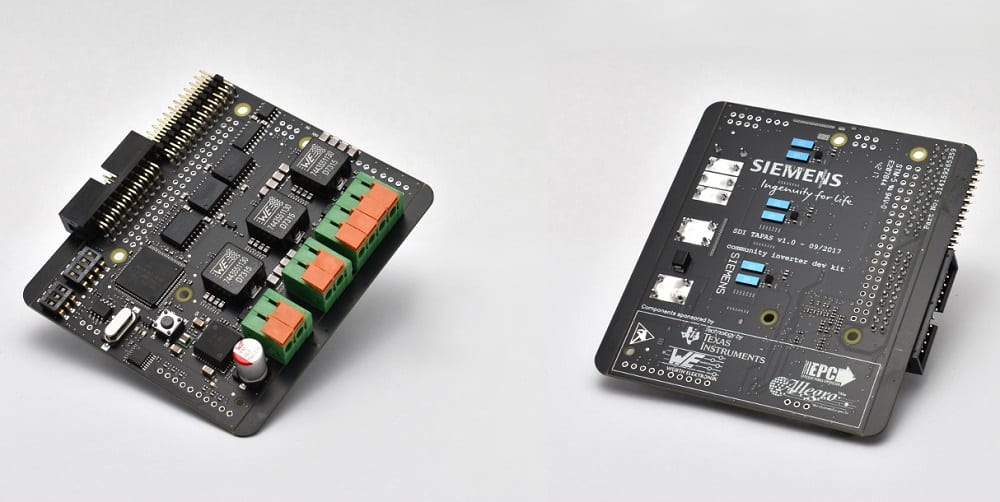Tapas, the new inverter developed at Siemens Corporate Technology, has innumerable possible uses. It is much more universal in application than previous inverters, features low distortion, and is very dynamic and impressively compact in its design. In order to learn more about the wide range of possible uses, Siemens has now organized a competition in which engineers, scientists, and makers can try out the new inverter and learn what just what it can do.
Robotic arms, audio amplifiers or drones – all of these applications are using so called inverters. Inverters are high-power electronic devices that adapt the frequency of a voltage as desired, in fractions of a second.
Today a wide variety of very specialized small inverters are used for specific application areas. This might soon be a thing of the past, thanks to Tapas, a new universal inverter that was developed by experts at Siemens Corporate Technology.
This innovation of this inverter was primarily made possible by the development of GaN power switches. “We describe the transition from silicon to GaN as being similar to the switch from vacuum tubes to transistors – it will make completely new applications possible overnight,” said Dominic Buchstaller, who managed the development at Siemens of the new inverter.
“The effect will be disruptive.” predicts Buchstaller.
“This board (TAPAS) is intended to train the next generation of power electronics researchers and (application) engineers. It is designed as an educational platform that addresses enthusiasts as well as experts at universities and in the industry.
“TAPAS features a 48V, 3-phase GaN power stage with on-board filters. This design-choice allows for a high switching frequency/bandwidth (300kHz and beyond) whilst producing a smooth output wave-form. In contrast, commonly available IGBT or MOSFET converter boards typically have a rather limited bandwidth and/or produce a square output wave-form.
“This unique feature of high bandwidth and smooth output makes TAPAS to some degree universal, giving rise to educational applications in ac and dc drives, dc-dc power conversion, audio, robotics, magnetic field control, battery charging, etc. Note that universality is achieved with a single, fixed hardware platform where the overall functionality is defined via software (changes) only – the reason why we coined the term ‘Software Defined Inverter’ (SDI).
“TAPAS is Raspberry PI compatible and multiple boards can be used in collaboration, giving rise to many-phase applications such as quadrocopters or multi-axis servo control. Together with open-source code examples and extensive documentation we made TAPAS as accessible to the community as possible.
“To help us make TAPAS affordable, we would like to thank our friends and partners at Texas Instruments, Efficient Power Conversion (EPC), Würth Elektronik and Allegro Micro who sponsored most of the active and passive components on the board (see bill of materials). I hope you will have as much fun with TAPAS as we had making it,” concluded Buchstaller.







